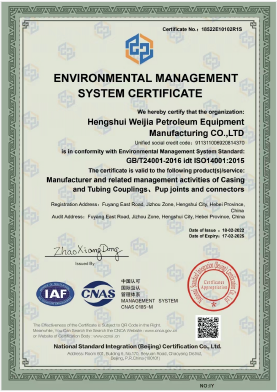- Afrikaans
- Albanian
- Amharic
- Arabic
- Armenian
- Azerbaijani
- Basque
- Belarusian
- Bengali
- Bosnian
- Bulgarian
- Catalan
- Cebuano
- Corsican
- Croatian
- Czech
- Danish
- Dutch
- English
- Esperanto
- Estonian
- Finnish
- French
- Frisian
- Galician
- Georgian
- German
- Greek
- Gujarati
- Haitian Creole
- hausa
- hawaiian
- Hebrew
- Hindi
- Miao
- Hungarian
- Icelandic
- igbo
- Indonesian
- irish
- Italian
- Japanese
- Javanese
- Kannada
- kazakh
- Khmer
- Rwandese
- Korean
- Kurdish
- Kyrgyz
- Lao
- Latin
- Latvian
- Lithuanian
- Luxembourgish
- Macedonian
- Malgashi
- Malay
- Malayalam
- Maltese
- Maori
- Marathi
- Mongolian
- Myanmar
- Nepali
- Norwegian
- Norwegian
- Occitan
- Pashto
- Persian
- Polish
- Portuguese
- Punjabi
- Romanian
- Russian
- Samoan
- Scottish Gaelic
- Serbian
- Sesotho
- Shona
- Sindhi
- Sinhala
- Slovak
- Slovenian
- Somali
- Spanish
- Sundanese
- Swahili
- Swedish
- Tagalog
- Tajik
- Tamil
- Tatar
- Telugu
- Thai
- Turkish
- Turkmen
- Ukrainian
- Urdu
- Uighur
- Uzbek
- Vietnamese
- Welsh
- Bantu
- Yiddish
- Yoruba
- Zulu
Exploring API Casing Sizes for Optimal Performance and Versatility in Industrial Applications
Understanding API Casing Sizes A Comprehensive Overview
When it comes to the oil and gas industry, one of the critical components in well construction is the casing. The American Petroleum Institute (API) has established a standardized system for casing sizes, which facilitates communication, design, and construction processes across different sectors. In this article, we will delve into the API casing sizes, their importance, and the various factors that influence their selection.
What is API Casing?
Casing refers to the steel pipe that is inserted into a drilled well to provide structural integrity and prevent the collapse of the wellbore. Additionally, it serves to isolate different underground layers, thereby protecting freshwater aquifers from contamination and maintaining the pressure in the surrounding formation. The API casing sizes, established by the American Petroleum Institute, provide a standardized approach to ensure that the casing fits the specific well environment and operational requirements.
Standard Casing Sizes
API has set forth a range of casing sizes that are categorized into different types, primarily based on their diameter and weight. The most common sizes for casing are
- Conductor Casing Generally, the largest diameter casing used at the surface, typically ranging from 20 to 30 inches in diameter. It is crucial for supporting the subsequent casing strings and preventing the entrance of surface water.
- Surface Casing Ranges from 13.375 to 20 inches in diameter. This type of casing is vital for protecting groundwater and providing a sturdy base for production casing.
- Intermediate Casing Typically between 9.625 and 13.375 inches in diameter, this casing acts as a barrier to protect the formation and isolate different pressure zones.
- Production Casing Ranges from 4.5 to 9.625 inches in diameter, this is used to isolate the production zone and facilitate the extraction of oil or gas from the well.
Each casing type is designated with a specific API designation, signifying its intended purpose
.api casing sizes

Importance of Casing Sizes
Choosing the right casing size is crucial for various reasons. First and foremost, it ensures the structural stability of the well and minimizes the risk of collapse. Furthermore, proper casing size prevents fluid migration between formations, thereby safeguarding freshwater aquifers and ensuring environmental protection.
Moreover, incorrect sizing can lead to operational inefficiencies and increased costs. For instance, if a casing is too small, it may not withstand the pressure from the surrounding formations, potentially resulting in a catastrophic failure. On the other hand, overly large casings can lead to unnecessary expenditures and logistical challenges.
Factors Influencing Casing Selection
Several factors influence the selection of API casing sizes, including
1. Well Depth Deeper wells require casing that can withstand higher pressures and temperatures, making the choice of size critical.
2. Geological Conditions The characteristics of the formations being drilled, including the type of rock and the presence of natural fractures, can dictate the necessary casing size and type.
3. Hydrostatic Pressure The pressure exerted by the fluids within the well must be accounted for, as it affects the integrity and stability of the casing.
4. Future Plans If there are plans for additional drilling or production phases, these should be considered when selecting the casing size to allow for flexibility and adaptability.
Conclusion
In conclusion, API casing sizes play an integral role in well construction within the oil and gas industry. Understanding the nuances of these sizes, their implications, and the factors influencing their selection is essential for engineers and operators alike. By adhering to the established API standards, the industry can ensure the safety, efficiency, and environmental stewardship of oil and gas operations. As technology advances and exploration demands evolve, continuous evaluation and adaptation of casing specifications will remain paramount.
-
Tubing Pup Joints: Essential Components for Oil and Gas OperationsNewsJul.10,2025
-
Pup Joints: Essential Components for Reliable Drilling OperationsNewsJul.10,2025
-
Pipe Couplings: Connecting Your World EfficientlyNewsJul.10,2025
-
Mastering Oilfield Operations with Quality Tubing and CasingNewsJul.10,2025
-
High-Quality Casing Couplings for Every NeedNewsJul.10,2025
-
Boost Your Drilling Efficiency with Premium Crossover Tools & Seating NipplesNewsJul.10,2025







